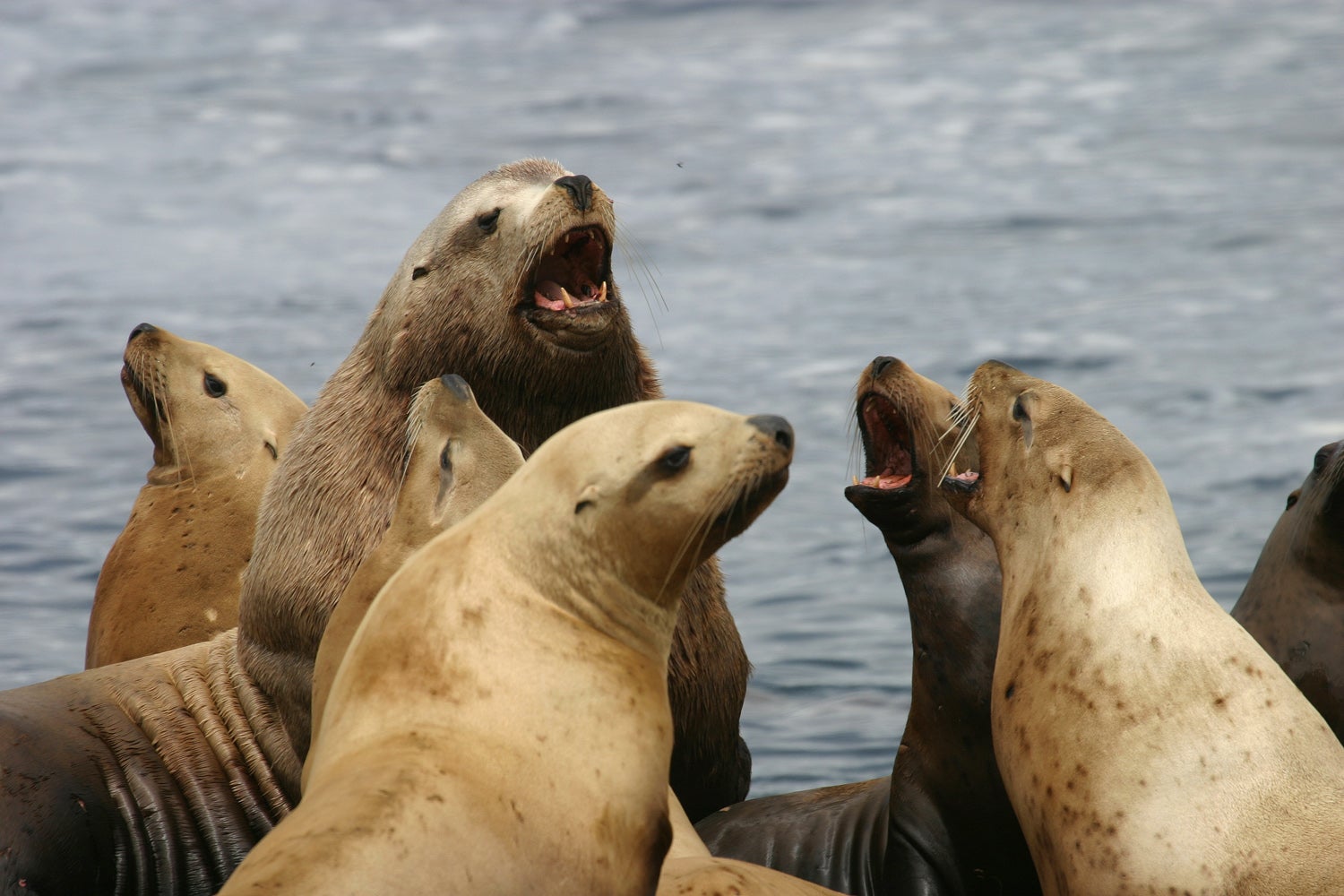Industrial Fishing Leaves Steller Sea Lions Searching for Lunch
The government’s plan to allow industrial fishing fleets into protected waters threatens the endangered Steller sea lion, but there is a better way.

This page was published 10 years ago. Find the latest on Earthjustice’s work.
Recently, Earthjustice filed suit against the National Marine Fisheries Service on behalf of Greenpeace and Oceana for allowing industrial fishing in protected areas of the western and central Aleutian Islands. The regulatory agency’s decision doesn’t bode well for the endangered western population of Steller sea lions, whose numbers remain abysmally low thanks to decades of intense fishing in the area.
First listed as endangered in the 1990s, Steller sea lions are the largest member of the Otariid (eared seal) family, with the males growing up to 2,500 pounds. To maintain a healthy weight, Steller sea lions must consume large quantities of fish every day. Adequate prey is especially important for female sea lions that need to eat enough fish to feed themselves and their nursing pups, who may stay with their mother as long as three years. Unfortunately, industrial fishing fleets harvest millions of tons of the same fish consumed by Steller sea lions, so when industrial fishing fleets harvest within or too close to their habitat, sea lions go hungry.
In 1993, critical habitat was declared to protect Steller sea lion food sources, including a buffer zone of 20 nautical miles around all major haul-outs and breeding sites. In the early 2000s, limits on industrial fishing within Steller sea critical habitat were adopted for some portions of the species’ range (i.e., the eastern Aleutian Islands and Gulf of Alaska) and have helped the population stabilize in those particular areas.
In 2010, based in significant part on the positive results of fishing limits in other areas, the National Marine Fisheries Service finally adopted fuller protection measures for Steller sea lions in the western and central Aleutians—measures that Earthjustice helped defend from industry. But these better protection measures proved to be short-lived. Bowing to industry pressure without giving the measures a chance to work, the agency recently decided to reverse course and substantially increase industrial fishing near and within Steller sea lion critical habitat in the western and central Aleutian Islands. This decision flies in the face of the agency’s own projection that Steller sea lions are expected to go extinct locally in the western Aleutians within 50 years—which counsels for more protection, not less. The agency’s decision will only further harm Steller sea lions, which the government has spent considerable hours and funds to protect.
A Long Term Solution?
Might there be a way to manage industrial fishing in the North Pacific to better protect endangered Steller sea lions? We think so.
Currently, the North Pacific fisheries are managed on a single-species basis, meaning that annual catch limits are designed to maximize the catch of targeted fish. In other words, fishing levels are set with a short-term focus on fishing industry profits, without full consideration of the long-term health of the ecosystem, including Steller sea lions. While models are available to better forecast the effects of fishing on multiple species and the food web as a whole, decision-makers so far have declined to use them to set fishing levels. This failure to account for the overall welfare of the ecosystem is a mistake not only for Steller sea lions but for the long-term sustainability of the fisheries as well.
We look forward to the day when fishing in the North Pacific is managed sustainably, in a manner that supports both a healthy industry and a healthy ecosystem. Until that time, Earthjustice will be in court to make sure none of the parts of this beautiful ecological machine disappear.
Opened in 1978, our Alaska regional office works to safeguard public lands, waters, and wildlife from destructive oil and gas drilling, mining, and logging, and to protect the region's marine and coastal ecosystems.